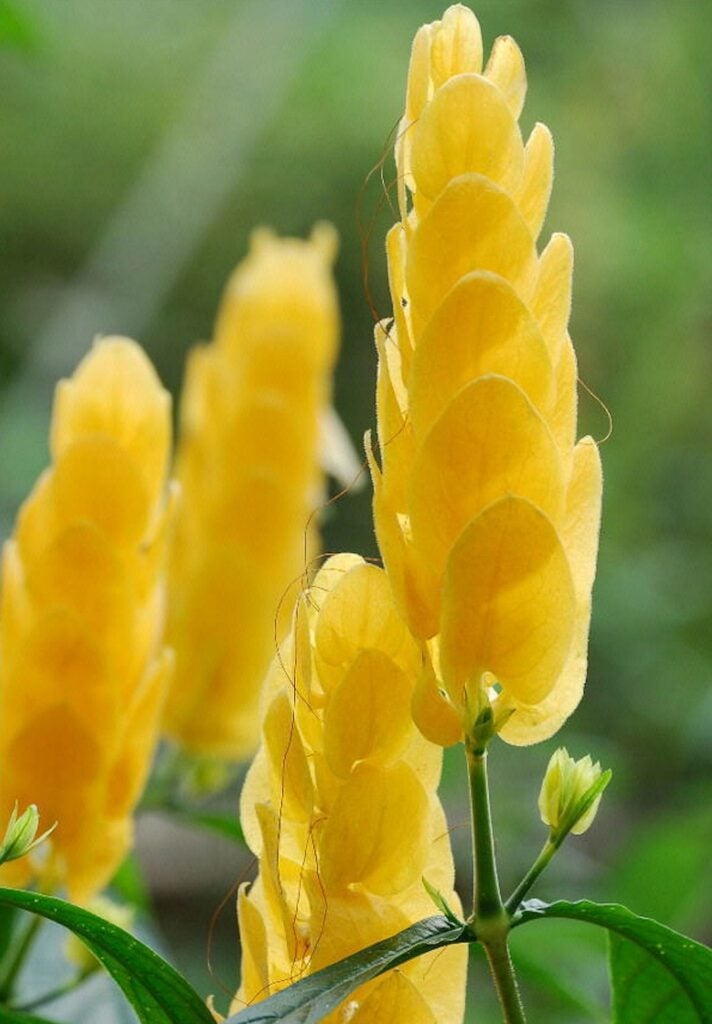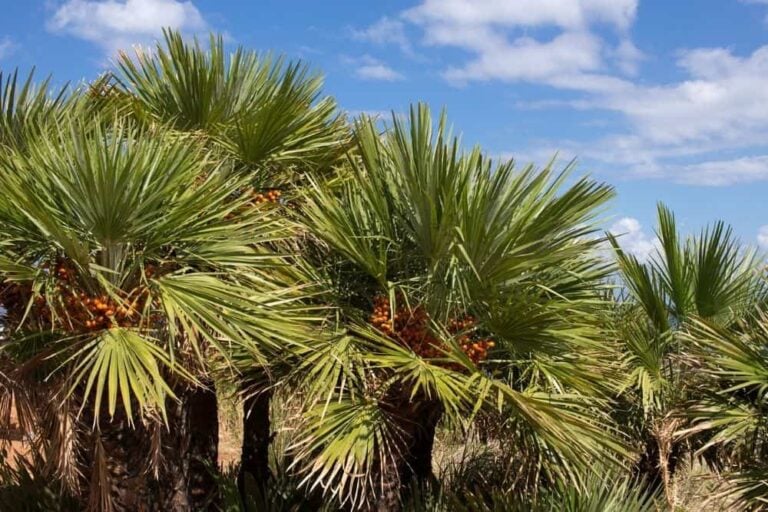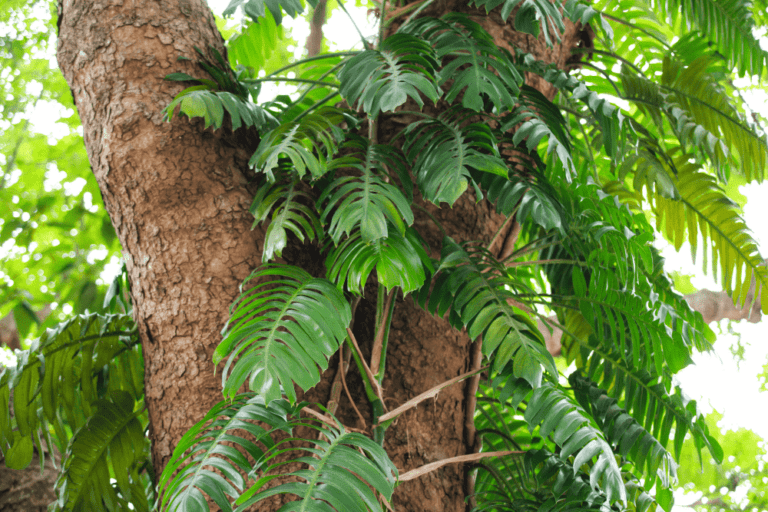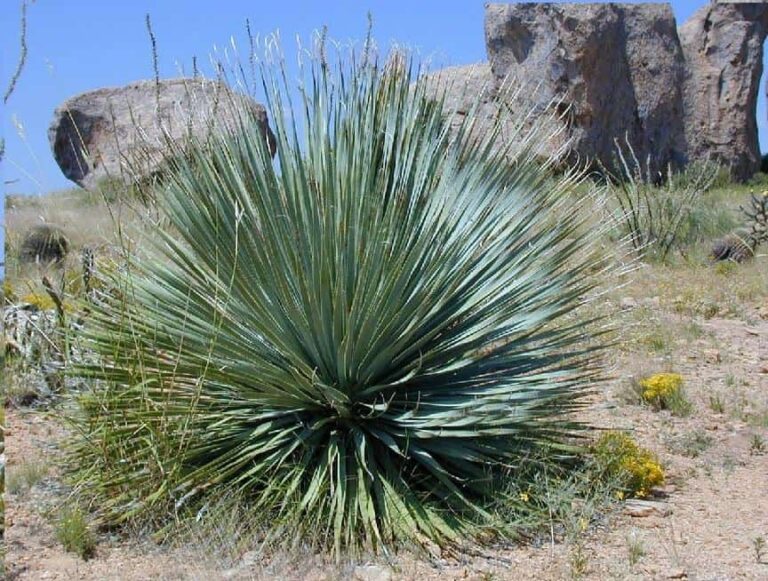Quickly discover the Lollipop Plant: A Pachystachys Lutea Overview
Are you looking for a houseplant that is easy to care for and adds a pop of color to your home? Look no further than the lollipop plant. Also known as Pachystachys lutea, this tropical shrub is a reliable and adaptable addition to any indoor space.

With its yellow bracts and small white flowers, the lollipop plant always looks cheery and bright. It can thrive in full sun or bright light, making it a versatile choice for any room. Plus, with day and night temperatures of 60-80°F, it can thrive year-round in most indoor environments. Whether you’re a seasoned plant enthusiast or just starting out, the lollipop plant is a great choice for adding some greenery to your home.
Table of Contents
Overview of Lollipop Plant
If you’re looking for a compact shrub with a long flowering season, the Lollipop plant might be just what you need. This evergreen perennial produces small white flowers from a cone-shaped bract that is golden or yellow in color. The plant is also known as the Golden Shrimp plant or by its botanical name, Pachystachys lutea.
Description
The Lollipop plant is a soft-stemmed shrub that can grow up to 2.5 meters tall. It has oval-shaped, evergreen leaves that are dark green in color. The plant produces racemes of zygomorphic, long-throated, short-lived white flowers that emerge sequentially from overlapping bright yellow bracts. The flowers bloom throughout the warm months, making it a great addition to your garden or home.
Botanical Name
The botanical name of the Lollipop plant is Pachystachys lutea. It belongs to the family Acanthaceae and is native to Peru. The plant is also known as the Golden Shrimp plant due to its yellow bracts that resemble shrimp.
Trademark
The Lollipop plant is not trademarked, but it is a popular houseplant and garden specimen. It is adaptable to full sun or bright light and can grow in day and night temperatures of 60-80°F year-round. The plant is easy to care for, and it needs to be pruned regularly to maintain its shape.
In summary, the Lollipop plant is a beautiful, evergreen shrub that produces small white flowers from a golden or yellow cone-shaped bract. It is a reliable houseplant that can adapt to different light conditions and temperatures. Its long flowering season makes it a great addition to any garden or home.
Growing Lollipop Plant
If you’re looking for a reliable and cheery houseplant, the Lollipop Plant (Pachystachys lutea) is an excellent choice. This plant is known for its yellow bracts and small white flowers and is adaptable to full sun or bright light. You can grow the lollipop plant in your garden if you live in USDA Hardiness Zones 9 through 11.
Otherwise, you can grow it as an indoor houseplant. It is a subtropical evergreen plant. It fares better in stable indoor conditions than the variability of gardens. Its small range of hardiness zones is an indication that there is a narrow range of its optimal conditions too. Here are some tips to help you grow and care for your Lollipop Plant.
Light
Lollipop Plants prefer bright, indirect light, but they can also tolerate partial shade. If you’re growing your plant indoors, place it near a window that receives plenty of sunlight. If you’re growing it outdoors, make sure it’s in a spot that receives morning sun and afternoon shade.
Watering
Lollipop Plants like to be kept moist but not waterlogged. Water your plant when the top inch of soil feels dry to the touch. Be careful not to overwater, as this can lead to root rot. It’s also important to make sure your plant is in a pot with good drainage.
Soil
Lollipop Plants prefer well-draining soil that is slightly acidic. You can use a general-purpose potting mix or make your own by mixing equal parts peat moss, perlite, and vermiculite. Avoid using soil that is too alkaline, as this can cause yellowing of the leaves.
Temperature
Lollipop Plants prefer temperatures between 60-80°F year-round. They can tolerate slightly cooler temperatures at night, but it’s important to avoid exposing them to temperatures below 50°F.
Humidity
Lollipop Plants prefer high humidity, so it’s a good idea to mist them regularly or place them on a tray of pebbles filled with water. You can also use a humidifier to increase the humidity in the air around your plant.
Overall, Lollipop Plants are relatively easy to care for and make a great addition to any indoor or outdoor space. With proper care, your plant should thrive and continue to bring cheer with its bright yellow bracts and white flowers.
Yellow Shrimp Plant
If you are looking for a shade-loving tropical plant that is easy to enjoy, the Yellow Shrimp Plant is a great option. This perennial plant develops into a shrubby bush with large, dark green foliage that can add a pop of color to your garden.
Description
The Yellow Shrimp Plant, also known as the Golden Shrimp Plant or Lollipop Plant, is a soft-stemmed evergreen shrub that can grow up to 2.5 meters tall. It is native to lowland areas of Central and South America, from El Salvador to Peru. The plant has heavily-veined, dark green leaves and produces bright yellow bracts with white flowers that attract hummingbirds and other long-tongued pollinators.
Pollinators
The Yellow Shrimp Plant is a great addition to any garden as it attracts a variety of pollinators. The long-tongued pollinators, such as hummingbirds and butterflies, are particularly drawn to the bright yellow bracts of the plant. The white flowers that emerge from the bracts provide nectar for the pollinators, making it a great plant for supporting local ecosystems.
Growing Tips
If you are planning to grow the Yellow Shrimp Plant, it is important to keep in mind that it prefers moist, well-drained soil. The plant can tolerate partial shade and needs to be watered regularly to keep the soil moist. It is also important to fertilize the plant every two weeks during the growing season to promote healthy growth.
Here are some additional tips for growing the Yellow Shrimp Plant:
- Plant the shrub in a location that receives partial shade.
- Water the plant regularly to keep the soil moist but not waterlogged.
- Fertilize the plant every two weeks during the growing season.
- Prune the plant regularly to promote bushy growth and remove any dead or damaged branches.
Overall, the Yellow Shrimp Plant is a great addition to any garden. Its bright yellow bracts and white flowers attract pollinators, making it a great plant for supporting local ecosystems. With the right growing conditions, this plant can thrive and add a pop of color to your garden.
Golden Shrimp Plant
If you’re looking for a unique, tropical plant to add to your garden or indoor space, the Golden Shrimp Plant (Pachystachys lutea) is an excellent choice. Here’s what you need to know about this fascinating plant.
Description
The Golden Shrimp Plant, also known as the Lollipop Plant, is a soft-stemmed, broad-leaved plant in the acanthus family. It is native to lowland areas of Central and South America, from El Salvador to Peru. The plant is an evergreen shrub that can grow up to 2.5 meters tall, but it is usually kept smaller in containers.
One of the most striking features of the Golden Shrimp Plant is its bright yellow bracts, which emerge from overlapping racemes throughout the warm months. The zygomorphic, long-throated, short-lived white flowers emerge sequentially from these bracts. The plant’s heavily-veined, dark green leaves provide a beautiful contrast to the bright yellow flowers.
Growing Tips
The Golden Shrimp Plant is a relatively easy plant to care for, making it an excellent choice for beginner gardeners. Here are some tips for growing and caring for this plant:
- Light: The Golden Shrimp Plant prefers partial sun, so it should be placed in an area where it can receive some direct sunlight but is also shaded from the hottest afternoon sun.
- Watering: The plant prefers consistently moist soil, but it should not be overwatered. Allow the top inch of soil to dry out slightly before watering again.
- Fertilizer: The Golden Shrimp Plant benefits from regular fertilization during the growing season. Use a balanced, water-soluble fertilizer every two weeks.
- Containers: The Golden Shrimp Plant can be grown in containers both indoors and outdoors, as long as it is given adequate light and water. When grown indoors, it may benefit from occasional misting to increase humidity.
Overall, the Golden Shrimp Plant is a beautiful and unique addition to any garden or indoor space. With its striking yellow bracts, dark green leaves, and relatively easy care requirements, this plant is sure to impress.
Pachystachys Lutea
If you’re looking for a low-maintenance, eye-catching houseplant, the Pachystachys Lutea, also known as the Lollipop Plant, is an excellent choice. This sub-tropical species is native to Peru and produces small white flowers from a beautiful cone-shaped bract that is golden or yellow in color.
Description
The Pachystachys Lutea is a soft-stemmed evergreen shrub that can grow between 0.5 and 2.5 meters tall. Its dark green leaves are heavily veined and add to the plant’s lush appearance. The zygomorphic, long-throated, short-lived white flowers emerge sequentially from overlapping bright yellow bracts on racemes that are produced throughout the warm months.
Growing Tips
Here are some tips to help you grow a healthy and vibrant Pachystachys Lutea:
- Light: The Lollipop Plant prefers bright, indirect light, but can also tolerate some direct sunlight. Avoid placing it in a location with low light levels.
- Watering: Water your plant when the top inch of soil is dry to the touch. Overwatering can lead to root rot, so be careful not to let the soil become waterlogged.
- Temperature: The Pachystachys Lutea thrives in temperatures between 60-80°F year-round. Avoid exposing it to temperatures below 50°F.
- Humidity: This plant prefers high humidity levels, so consider using a humidifier or placing a tray of water near it to increase moisture in the air.
- Fertilizer: Use a balanced liquid fertilizer every two weeks during the growing season (spring and summer) to encourage healthy growth.
- Pruning: Regular pruning is necessary to keep the plant’s size manageable and to encourage bushy growth. Prune back the stems after flowering to promote new growth.
Overall, the Pachystachys Lutea is a beautiful and easy-to-care-for plant that can add a touch of tropical elegance to any indoor space.
Conclusion
Congratulations! You now have all the information you need to grow and care for your lollipop plant. With proper care, your plant can thrive and bring joy to your living space. Here are some key takeaways to keep in mind:
- Lollipop plants, also known as Pachystachys lutea, are tropical evergreen shrubs that produce yellow bracts and small white flowers.
- These plants are adaptable to full sun or bright light and prefer day and night temperatures of 60-80°F year-round.
- Lollipop plants require regular watering, but be sure not to overwater as this can lead to root rot.
- Fertilize your plant every two weeks during the growing season with a balanced fertilizer.
- Prune your lollipop plant to maintain its shape and remove any dead or diseased leaves.
- Repot your plant every two years or when it outgrows its current container.
Remember to keep an eye out for pests such as spider mites and mealybugs, and take action promptly if you notice any signs of infestation. With these tips in mind, you can enjoy a beautiful and healthy lollipop plant in your home or garden. If you are interested in other flowering plants, you can explore them here.



